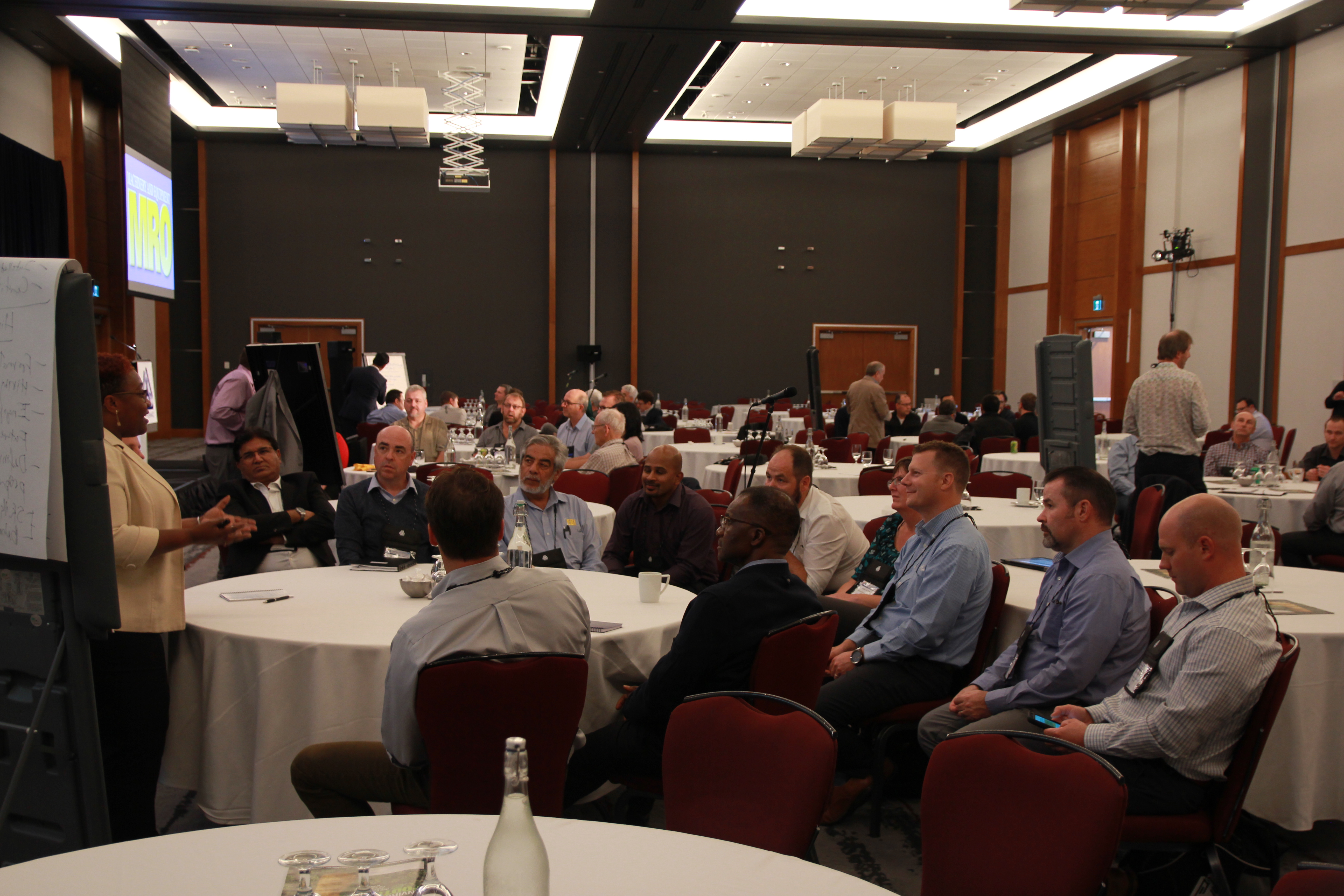
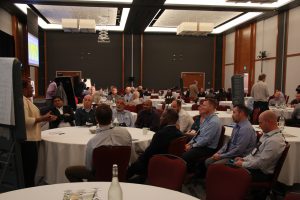
Photo: Mario Cywinski.
Industry professionals discuss topics of utmost importance to the MRO world.
During the MainTrain conference hosted by Plant Engineering and Maintenance Association of Canada (PEMAC) in Ottawa, MRO magazine hosted a round table discussion. The round table format had attendees break into five discussion groups. Each group discussed topics with facilitators for approximately 30 minutes. Participants were a part of two different discussion groups during the round table. After the table discussion, the facilitators summarized what was discussed and presented it to everyone in attendance.
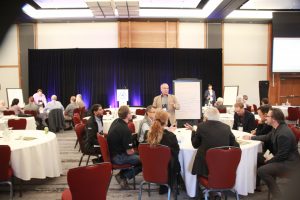
Photo: Mario Cywinski.
Democratizing Predictive Maintenance Through the Industrial Internet of Things
Facilitator: James Reyes-Picknell – Principal Consultant – Conscious Asset
My table discussed the IIoT and the potential democratization of predictive maintenance technologies. We discussed a number of issues, including availability of sensors (growing), lowering of installation costs (happening due to wireless and Bluetooth technologies), concerns about security (largely eliminated by the security of cloud applications), and the impact of bandwidth on the ability to deploy IIoT devices widely for predictive purposes.
While using the IIoT to spread the ability to perform predictive assessments and diagnostics to a potentially broader audience of smaller and medium-sized businesses, the biggest concern was around the availability of bandwidth to support the large data volumes and willingness of companies to share their data. Sharing led to a discussion of artificial intelligence (AI) and its role. AI requires large amounts of data from similar equipment in order to learn enough to make good predictions. However, few companies use large numbers of like equipment on their own – sharing of data to enable AI to learn would be needed. That raises the as-yet-unanswered question, who owns the data, and how does one get paid for that data asset? A couple of ideas were put forward but no firm conclusions; this issue will need further dialogue among information technology and intellectual property professionals.
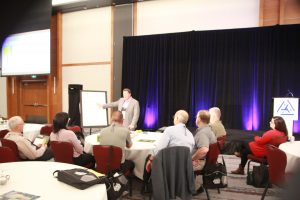
Photo: Mario Cywinski.
The Lies Reliability and Maintenance Professionals Tell
Facilitator: Shon Isenhour – Partner, Eruditio
We talked about lies in our session, about maintenance and reliability models and tools that we use and some of the subtleties that often aren’t understood or taught correctly. We discussed the six failure curves of RCM (reliability-centred maintenance) and how to explain them as relating to types of asset or classes of assets but in reality they relate to types of failure modes of assets. This means that one asset could have many failure modes that relate to different curves, so suggesting that one of the curves represents an asset class is incorrect. This explanation helps individuals to then understand that 68 per cent of the failure modes are infant mortality, but 68 per cent of the assets don’t always fail in the infant phase.
We also talked about RCA (root cause analysis). The table discussed that there is no such thing as root cause because every single problem has root causes. All problems need both actions that happen instantaneously and conditions that have existed over time. The example used was fire, which does not have a cause. It has three causes: ignition, which is likely instantaneous, and fuel and oxygen, which are likely conditions that have existed over time. The key is it takes all three causes not just one root cause. We finished up by talking about where and how they could use this information in their site to improve their reliability programs.
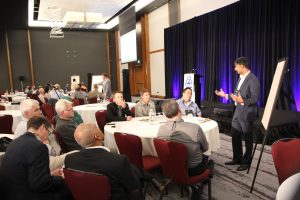
Photo: Mario Cywinski.
Enabling Excellence in Asset Management
Facilitator: Nigel D’Souza – Asset Management Consultant, City of Mississauga
Our discussion was broken down into the following: What does excellence look like? What are the barriers to excellence? How do we enable excellence in asset management? Many organizations are striving to develop program and structure to establish how asset management looks for them. However, there appears to be too much focus on tools to support efficiency and results; an awareness of sustainment of asset function is required, and we need to look past just the next week, month, or fiscal year.
What does excellence look like? The group felt co-ordination of efforts through tactical and strategic alignment were absolutely necessary, with a transition from capital work to operations and maintenance, and finally to disposal, clearly supporting the overall goals for the organization. Many companies currently reward their various departments differently for performance, which results in this misalignment. So strategic alignment is a typical barrier to excellence and also an opportunity for potential quick wins.
To enable success and excellence, a change in culture is required at the organization, which should be supported through training and awareness of best practices. Senior level education is also paramount in garnering buy-in and support, and in having the support to demonstrate that full life cycle management is important to your organization.
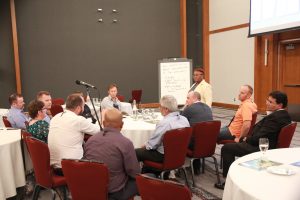
Photo: Mario Cywinski.
The Asset and Maintenance Management Professional of the Future
Facilitator: Suzane Greeman – Above-ground Asset Manager – Veolia North America (Winnipeg)
Specifically, we examined the issue from three angles using these questions. How will our hiring practices have to change in the future? What will the organizational culture of the future look like? We are in Industry 4.0; what skills, traits, and characteristics will the professionals and practitioners of the future need to have?
The conclusion was that a combination of hard and soft skills would be required of future professionals. Some of these include being multi-skilled and being able to understand complex problems in several dimensions. Engineers, for example, will need to know some sales, HR, business and finance, and inventory management principles; be collaborative leaders that can function effectively in cross-functional teams as organizations become less formal; and be flexible and adaptive to changing circumstances, not averse to changing technology.
The new professional will be bringing more to the table than traditional skills and, as such, will require development in the form of exposure to complex work, projects, training, mentorship, and visibility within the firm. Organizations will need to be more willing to look beyond traditional norms such as dress codes, fixed work locations, and working hours to accommodate employees with families and other significant interests.
Given that experienced-based skills are exiting the workforce faster than they can enter, industry may need to revisit apprenticeship, even though apprenticeship of the future may look different than in years gone by.
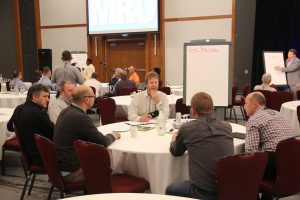
Photo: Mario Cywinski.
Best Practices to hire performant technical trade employees
Facilitator: Philippe Mercure – GM – OptiTest
In our group, we discussed how strong manufacturers and maintenance departments with a good number of employees hire all the time, not waiting to be under pressure, burning employees and overtime costs. Companies mentioned that since Ontario increased the minimum wage, it created a significant shortage for production employees, labourers, and machine operators.
On the flip side, companies in Alberta shared that there is a strong workforce of employees available. Most companies use a combination of their own HR departments and agencies to hire trade-skilled employees. Many companies have had difficulties in retaining their trade skilled employees lately. Almost everybody agreed that the best way to retain employees is to have a strong employee culture at the company.
Steps and best practices that were discussed were writing a proper job description that includes all the requirements and job information; job posting and/or to go with a recruitment agency; resume screening; telephone interview screening, as you can clarify things over the phone and eliminate candidates, saving time, as interviews are time-consuming when not the candidate is not ideal; in person interview; applicant talent assessments; and job offer conditional to reference check, criminal background check, and medical exam.

